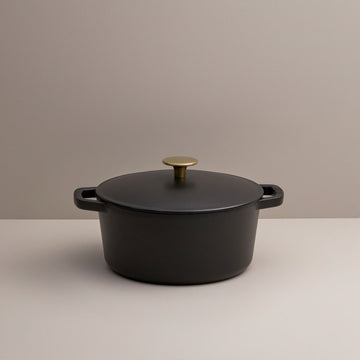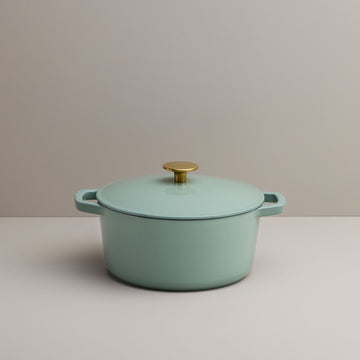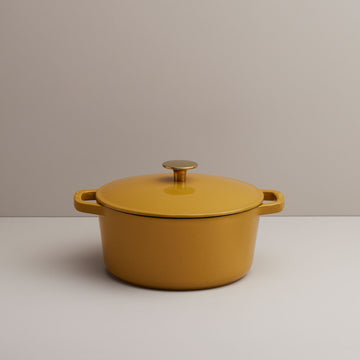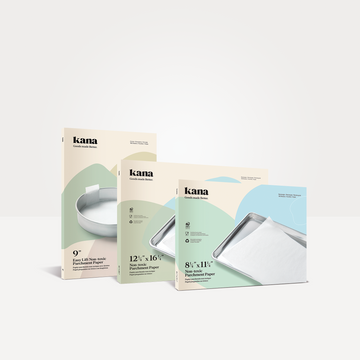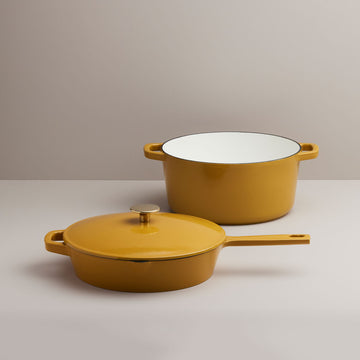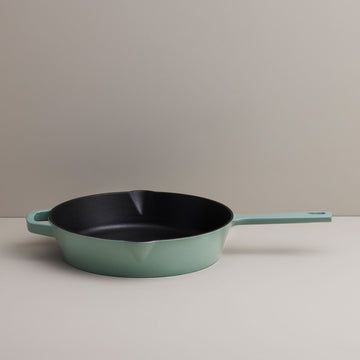The Advantages of Enameled Cast Iron and Raw Cast Iron Cookware

Cast iron cookware comes in all shapes and sizes and are classified as kitchen staples all around the world. Here’s a look at why both raw and enameled cast iron Dutch ovens are perfect for any kitchen.

Cast iron cookware has seen a resurgence in popularity in recent years. And for good reason. Dutch ovens and skillets made from this durable metal have made a name for themselves as kitchen staples all across the world. Whether you’re a seasoned chef or a novice cook, cast iron has a unique versatility, as well as an heirloom quality that makes it easy to pass down from one generation to the next. Here we will compare the benefits of enameled cast iron cookware to the advantages of the classic raw cast-iron workhorses that so many of us are already enamoured with.
The history of cast-iron cookware
Cast-iron cookware reaches way back into history, particularly in Asian countries such as Korea, India and China. It made its debut in Europe and the United States in the mid 19th century, before the invention of the modern kitchen stove. Cast iron cauldrons, placed in the family hearth, were used for cooking because they were inexpensive and retained heat better than other materials. Flat-bottomed cast iron pans came into popularity towards the end of the 19th century and the rest is history.

The benefits of raw cast-iron
Known for its capacity to retain heat, raw cast iron cookware remains hugely popular, particularly in recipes that call for that perfect sear on meats and vegetables. For the cast iron uninitiated, it’s difficult to put down on paper what a difference in flavor it creates. But trust us, there’s no comparison to the depth in flavor profile - it will make your meat taste meatier, and your vegetables taste more rounded.
Raw cast iron is incredibly versatile and can be used to cook up a classic bacon and egg breakfast or to concoct a delicious braised beef stew. Baking cornbread, cakes, and cookies is a breeze in your shallow skillet, and you’ll never turn back after baking fresh sourdough bread in your Dutch.
Owning raw cast iron means having to pay some extra attention to taking care of your Dutch oven or skillet. It requires seasoning with animal fat or vegetable oils that over time create a non-stick film that makes cooking and cleaning up much easier. Don’t be afraid of raw cast iron, when wielded correctly, you can create one mouthwatering masterpiece after the next. All it takes is a little patience.
Chef’s Tip: Seasoning is simple. Once you’ve cleaned your raw cast iron pan or dutch oven, coat the cooking surface in Milo Seasoning Oil or another fat, such as melted shortening, and bake it for one hour at 375℉. Let it cool in the oven and it’s ready to go for your next recipe.
Raw cast iron is incredibly versatile and can be used to cook up a classic bacon and egg breakfast or to concoct a delicious braised beef stew. Baking cornbread, cakes, and cookies is a breeze in your shallow skillet, and you’ll never turn back after baking fresh sourdough bread in your Dutch.
Owning raw cast iron means having to pay some extra attention to taking care of your Dutch oven or skillet. It requires seasoning with animal fat or vegetable oils that over time create a non-stick film that makes cooking and cleaning up much easier. Don’t be afraid of raw cast iron, when wielded correctly, you can create one mouthwatering masterpiece after the next. All it takes is a little patience.
Chef’s Tip: Seasoning is simple. Once you’ve cleaned your raw cast iron pan or dutch oven, coat the cooking surface in Milo Seasoning Oil or another fat, such as melted shortening, and bake it for one hour at 375℉. Let it cool in the oven and it’s ready to go for your next recipe.
Recipe Idea:
To create a delicious Irish stew, brown flour-tossed beef pieces over medium heat in your Dutch oven until slightly brown. Pour in a can of stout beer, some onion, potato chunks, carrots and green peas and season with your favorite herbs, salt and pepper. Let it cook slowly, adding a little more flour and water over time to allow the gravy to thicken. It makes such a great dinner and an equally delicious lunch the next day.
Enamored with enamel cast-iron
Enameled cast iron is a very different type of cookware to raw cast iron but there are some similarities. First, they both retain heat very well, making slow cooking that much more achievable. Also, both can be used for an array of different types of meals. Enameled Dutch ovens are great for making sauces and soups but can also produce a beautifully crusted steak with grilled veggies that you might have only thought you could get in a restaurant.
The high sides of a Dutch oven also means less splatter all over your stovetop, which can only be a good thing.
One of the biggest differences between raw and enamel is that enameled cast iron doesn’t require seasoning and is relatively easy to clean. However, care must be taken to ensure that the enamel remains protected. Never add cold water to a hot pot and be sure that you never drop it on a hard surface.
The high sides of a Dutch oven also means less splatter all over your stovetop, which can only be a good thing.
One of the biggest differences between raw and enamel is that enameled cast iron doesn’t require seasoning and is relatively easy to clean. However, care must be taken to ensure that the enamel remains protected. Never add cold water to a hot pot and be sure that you never drop it on a hard surface.
One of the biggest differences between raw and enamel is that enameled cast iron doesn’t require seasoning and is relatively easy to clean.

Chef’s Tip: To keep your enameled cast iron looking brand new, let it cool on the stove for about 15 to 20 minutes with just a little soap on the bottom. Once it’s sufficiently cooled, add just a little water and work up a lather. It will only take a few minutes to have your cookware spic and span.
Recipe Idea: Chili is a great weekday meal that doesn’t take a lot of your precious time. Add your favorite ground meat or vegetarian substitute with an onion and some oil to your enameled Dutch oven and let it brown. Add tomatoes (in winter, canned tomatoes are great), some mushrooms and peppers and season to your liking. Cumin adds a lot of flavor so be generous with your pinches. After 40 minutes you’ll be enjoying a bowl of piping hot chili. Hot sauce is optional but definitely encouraged.
Our range of Milo cookware includes both raw cast-iron and enameled cast-iron, so no matter your preference, we have you covered!
Recipe Idea: Chili is a great weekday meal that doesn’t take a lot of your precious time. Add your favorite ground meat or vegetarian substitute with an onion and some oil to your enameled Dutch oven and let it brown. Add tomatoes (in winter, canned tomatoes are great), some mushrooms and peppers and season to your liking. Cumin adds a lot of flavor so be generous with your pinches. After 40 minutes you’ll be enjoying a bowl of piping hot chili. Hot sauce is optional but definitely encouraged.
Our range of Milo cookware includes both raw cast-iron and enameled cast-iron, so no matter your preference, we have you covered!
Keep exploring
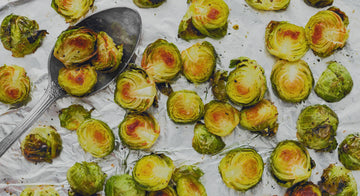
Is aluminum foil safe to cook with?
Aluminum foil may have been a kitchen pantry staple for the last 100 years but, as new research around food safety and environmental impact shows, it’s time we wrap up our love affair with this malleable metal.
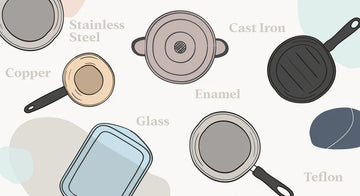
How to shop for non-toxic cookware and bakeware

Why is it called a Dutch Oven?
While Dutch ovens have become a charming and familiar part of any modern kitchen, their name does lead to some confusion. What do the Dutch have to do with it? Isn’t it an English invention? And what about the French? It’s time to straighten things out.
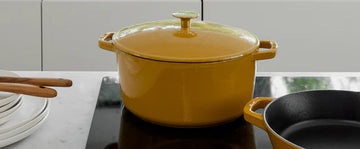
What is a Dutch Oven and why are they so popular?
The Dutch oven’s popularity has exploded in the last couple of years. If you’ve been wondering what this classic cooking pot brings to the table, read on.
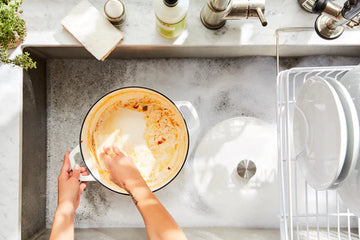
How to clean & season a cast iron Dutch Oven
Like with any cookware, there are times when your Dutch oven might get a little sticky, scorched or stained, but taken care of properly, your cast-iron cookware should last you well into the future.
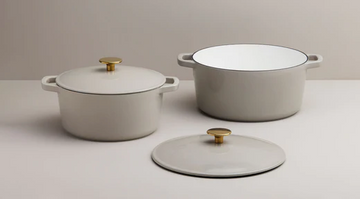
How to choose the best size Dutch Oven for you
Cast-iron Dutch ovens come in all shapes and sizes, and buying the best one for you is all about what you're cooking and who you’re cooking for.

Is aluminum foil safe to cook with?
Aluminum foil may have been a kitchen pantry staple for the last 100 years but, as new research around food safety and environmental impact shows, it’s time we wrap up our love affair with this malleable metal.

How to shop for non-toxic cookware and bakeware

Why is it called a Dutch Oven?
While Dutch ovens have become a charming and familiar part of any modern kitchen, their name does lead to some confusion. What do the Dutch have to do with it? Isn’t it an English invention? And what about the French? It’s time to straighten things out.
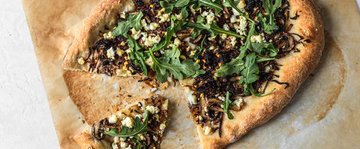
Crispy pizza at home: tips for the perfect crust
Have you ever made pizza at home, but been disappointed by a soggy or undercooked crust? There are tools and tricks to make homemade pizza just as good as delivery, whether you like thin or thick crust.

What is a Dutch Oven and why are they so popular?
The Dutch oven’s popularity has exploded in the last couple of years. If you’ve been wondering what this classic cooking pot brings to the table, read on.

How to clean & season a cast iron Dutch Oven
Like with any cookware, there are times when your Dutch oven might get a little sticky, scorched or stained, but taken care of properly, your cast-iron cookware should last you well into the future.
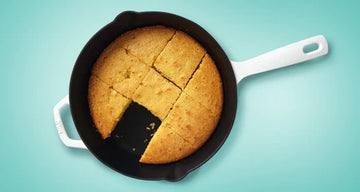
5 deliciously easy flour-free bread recipes
Simple bread recipes to make at home when you're running short on wheat flour.
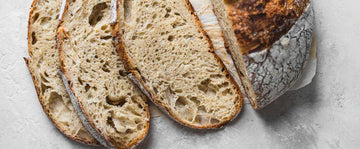
The proof is in the... proofing
The proofing process is an essential part of baking yeast-leavened goodies. Without it, you'll end up with a sad, flat pancake instead of that beautiful bread loaf you were hoping for. Yes, it takes some time to perfect the process, but once you've got it, you too can experience freshly-baked bread and pastries at home.
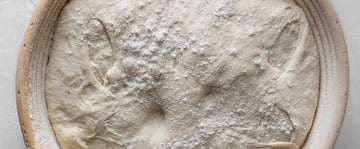
Proper proofing: how to work with yeast doughs
The most important technique to master when learning how to make bread and other yeasted treats is proofing, where all the rising happens. Today we’re going to learn how to proof bread dough for the best homemade loaves!

Why is it called a Dutch Oven?
While Dutch ovens have become a charming and familiar part of any modern kitchen, their name does lead to some confusion. What do the Dutch have to do with it? Isn’t it an English invention? And what about the French? It’s time to straighten things out.

What is a Dutch Oven and why are they so popular?
The Dutch oven’s popularity has exploded in the last couple of years. If you’ve been wondering what this classic cooking pot brings to the table, read on.

How to clean & season a cast iron Dutch Oven
Like with any cookware, there are times when your Dutch oven might get a little sticky, scorched or stained, but taken care of properly, your cast-iron cookware should last you well into the future.

5 deliciously easy flour-free bread recipes
Simple bread recipes to make at home when you're running short on wheat flour.

Crispy pizza at home: tips for the perfect crust
Have you ever made pizza at home, but been disappointed by a soggy or undercooked crust? There are tools and tricks to make homemade pizza just as good as delivery, whether you like thin or thick crust.
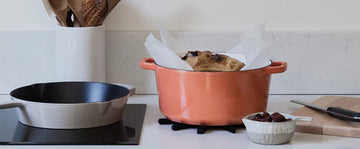
Can you use Parchment Paper in cast iron cookware?
Cast-iron cookware has become such a kitchen staple thanks in large part to its versatility and style. If you’re after a way to make it even easier to cook with your Dutch oven or skillet, look no further than a simple piece of parchment paper.
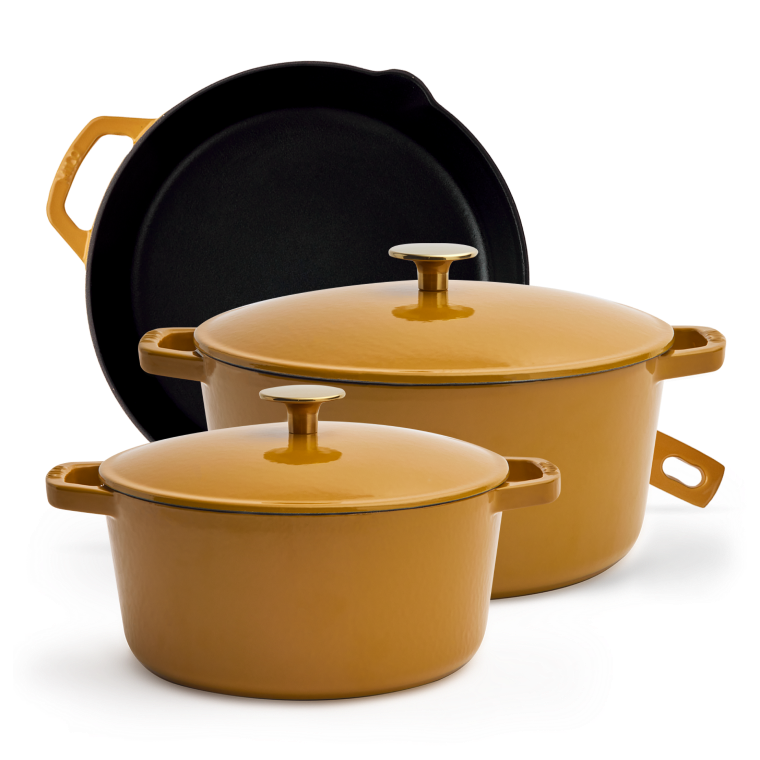
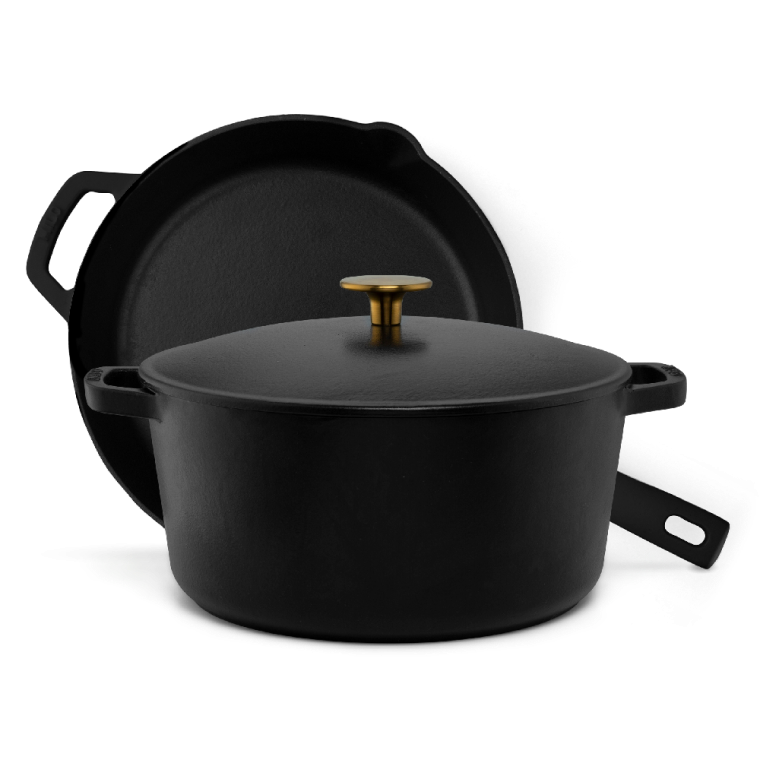
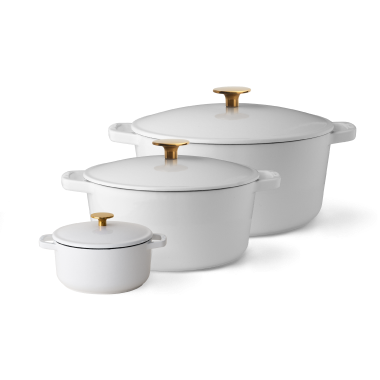
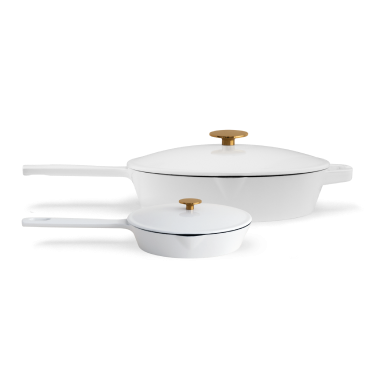


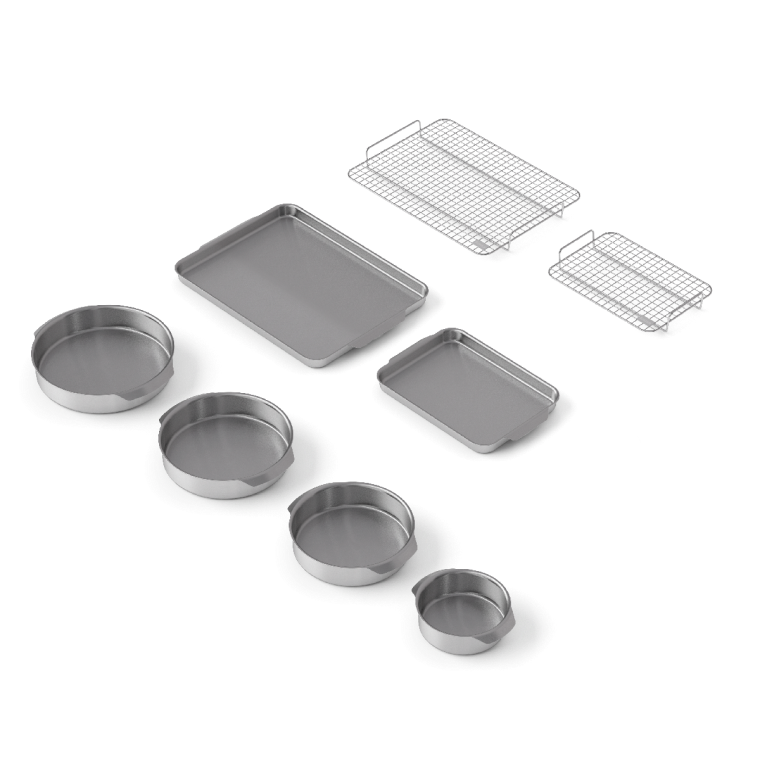
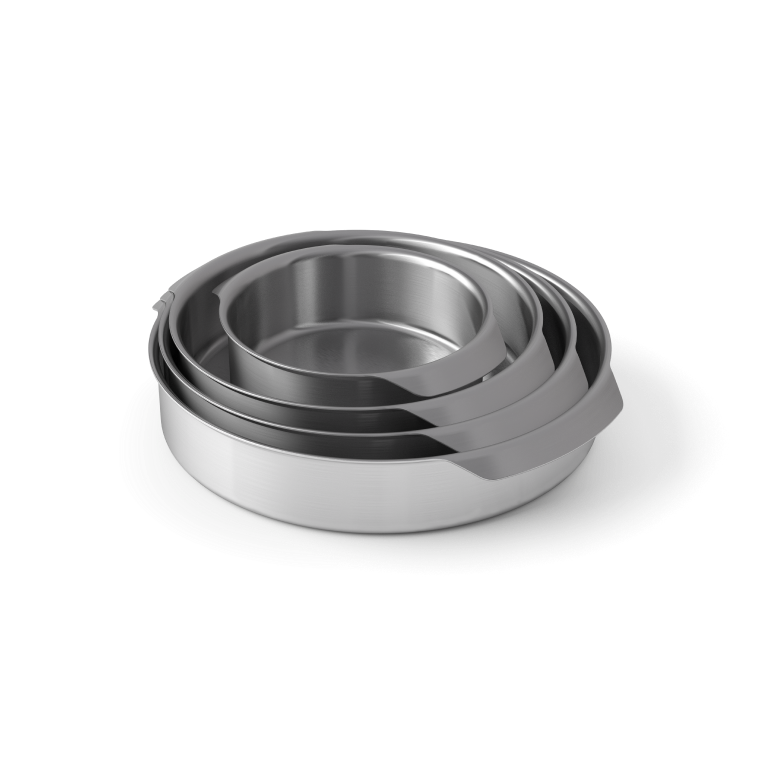


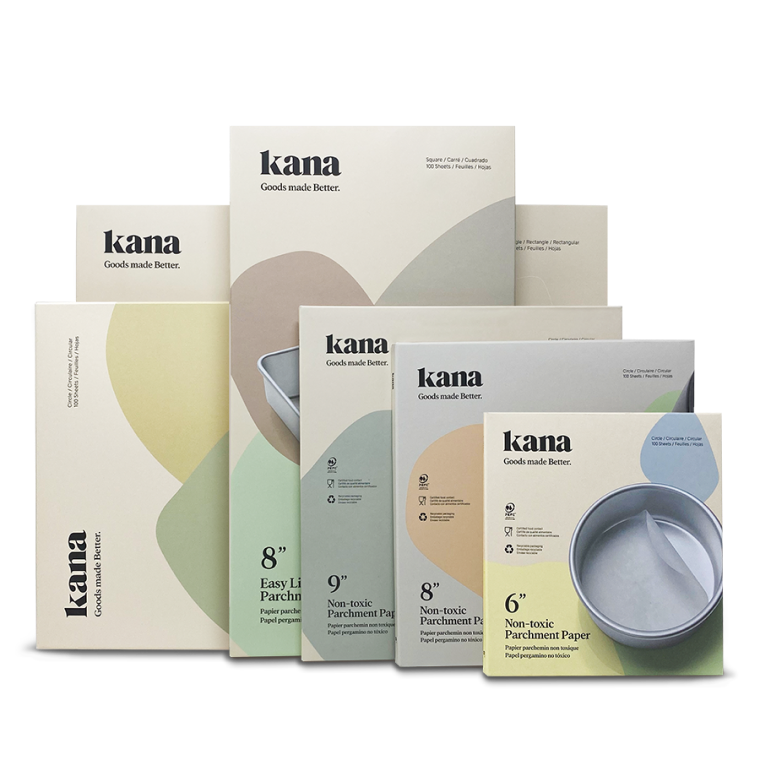






 Ultimate Skillet
Ultimate Skillet

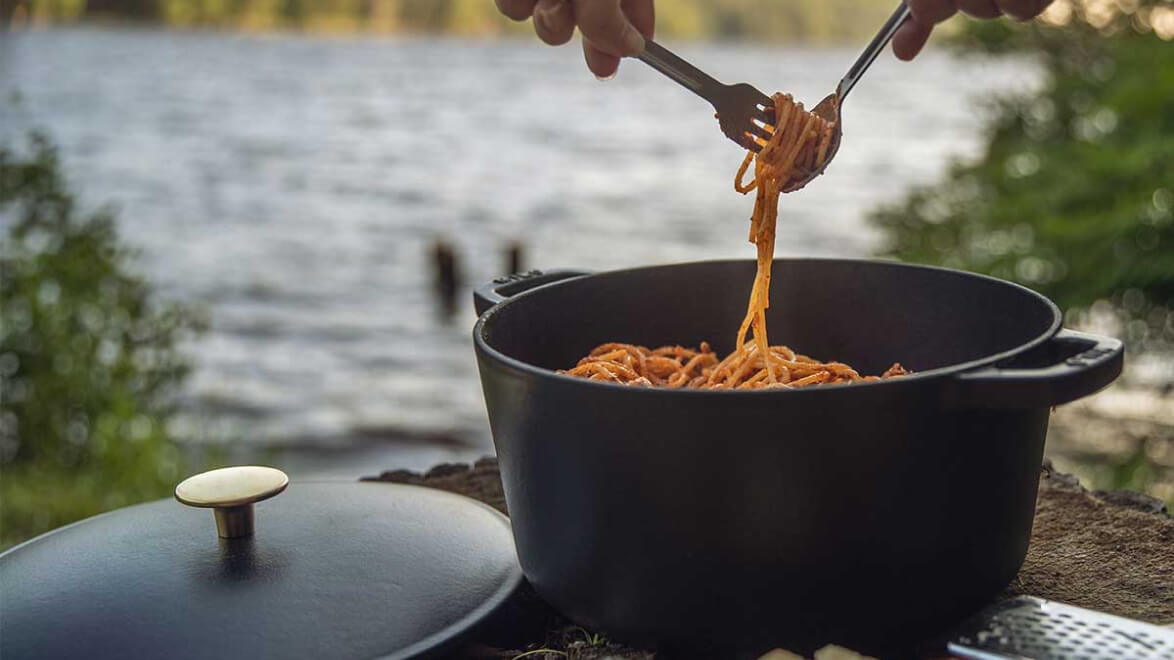
 5.5 Quart Dutch Oven
5.5 Quart Dutch Oven
